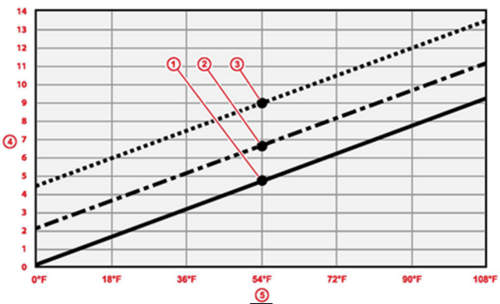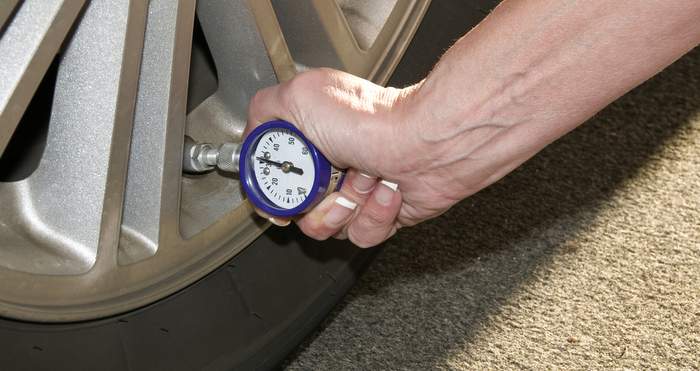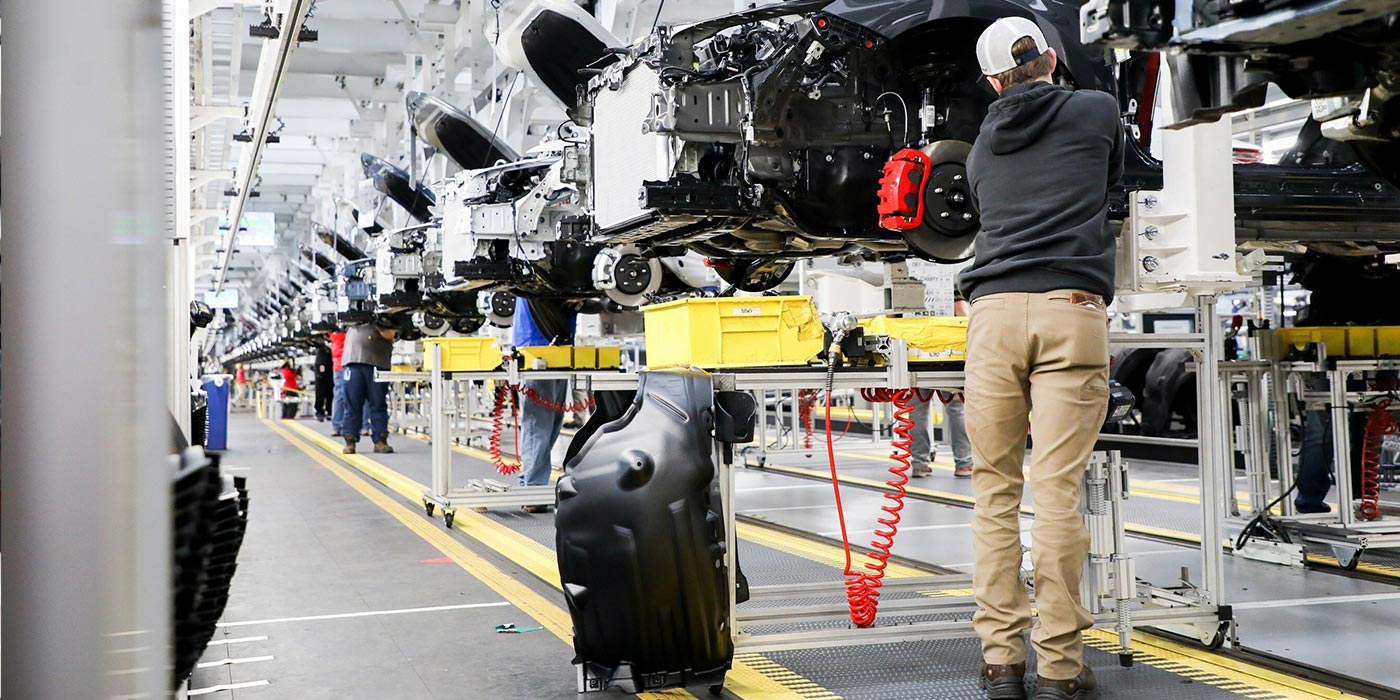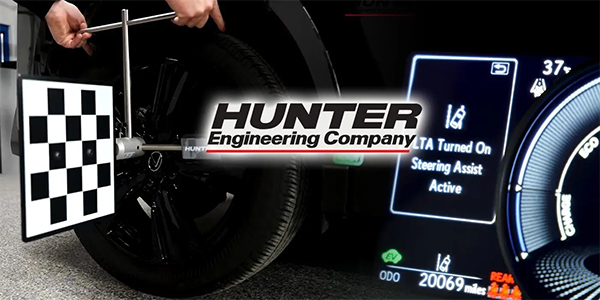Ambient temperature changes can dramatically alter tire pressure, which could cause a tire pressure monitoring system (TPMS) warning light to illuminate. The TPMS must be initialized based on the tire’s “cold” pressure listed on the vehicle’s tire pressure label, usually located in the driver-side door opening.
Tire temperature is dependent on cold tire pressure, ambient temperature, driving distance and speed, tread design and road surface temperature. As the temperature of the tire changes, air in the tire expands and contracts, effectively changing the tire’s air pressure. Cold tire pressure is generally considered to be the pressure in a tire that has not been driven in the past four hours and has been parked outdoors. The cold tire pressure for all vehicles will vary and will need to be adjusted accordingly.
Accurate tire pressure adjustments can prove challenging, especially when outside temperatures are significantly colder or warmer than shop temperature. Toyota offers a tire temperature-pressure compensation chart that can work on any vehicle but is much more useful on vehicles equipped with a TPMS.
To get a precise pressure adjustment, you should consider the difference of the air temperature in the shop and the lowest ambient temperature that may be expected in the next few weeks (especially in winter). Use the chart to compensate for the temperature of the tires when adjusting tire pressure. Let’s practice compensating for temperature in three examples.

Cold Tires
The vehicle has been parked overnight outside the shop, so the vehicle has “cold” tires, and tire pressures are set to 31.9 psi. The shop’s inside temperature is 68° F and the lowest expected ambient temperature in the local area is to be 14° F.
1. Subtract the expected lowest temperature (14° F) from the shop temperature (68° F) = 54° F.
2. Using the chart, find the intersection of the cold tire line at the point corresponding to 54° F and read the value on the tire pressure change axis. In this case, it would be about 4.9 psi.
3. The tires, including the spare tire, should be filled to: 31.9 + 4.9 psi = 36.8 psi.
Warm Tires
The vehicle has been driven to the shop on surface streets for about 30 minutes, so the vehicle has “warm” tires and tire pressures are set to 31.9 psi. The shop’s inside temperature is 68° F and the lowest expected ambient temperature in your area is to be 14° F.
1. Subtract the expected lowest temperature (14°F) from the shop temperature (68°F) = 54°F.
2. Using the chart, find the intersection of the warm tire line at the point corresponding to 54° F and read the value on the tire pressure change axis. In this case it would be about 6.7 psi.
3. The tires should be filled to: 31.9 + 6.7 psi = 38.6 psi.
Hot Tires
The vehicle has been driven to the shop on the highway for at least 60 minutes, so the vehicle has “hot” tires, and tire pressures are set to 31.9 psi. The shop’s inside temperature is 68° F and the expected lowest ambient temperature in the area is expected to be 14° F.
1. Subtract the expected lowest temperature (14°F) from the workshop temperature (68°F) = 54°F.
2. Using the chart, find the intersection of the hot tire line at the point corresponding to 54° F, and read the value on the tire pressure change axis. In this case it would be about 9.0 psi.
3. The tires should be filled to: 31.9 + 9.0 psi = 40.9 psi
The next time you go to “kick the tires,” try using Toyota’s tire temperature-pressure compensation chart. Correctly adjusting vehicle tire pressures will help keep your customer’s TPMS light out and provide them with a smooth-riding, safer-handling vehicle.
Written by the ALLDATA® Community Automotive Diagnostic Team. © 2014 ALLDATA LLC.















